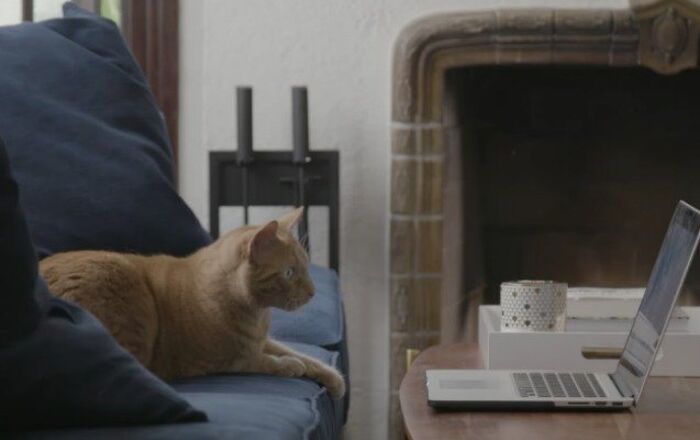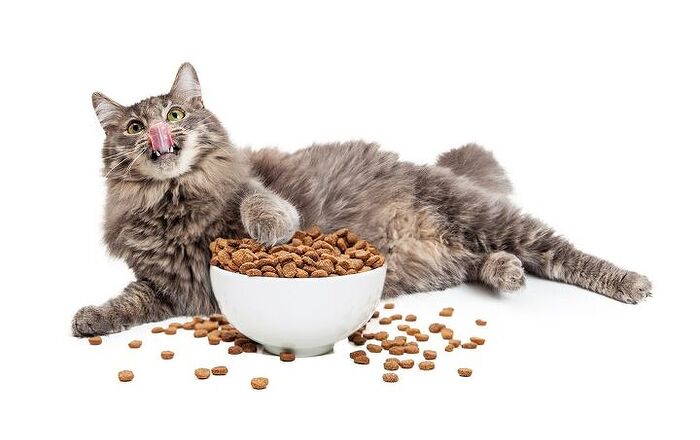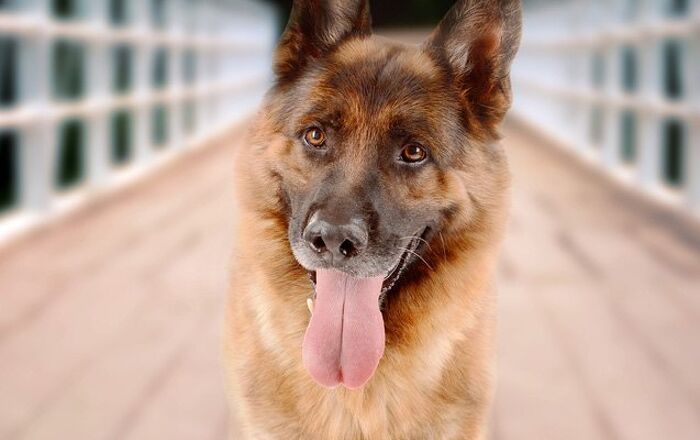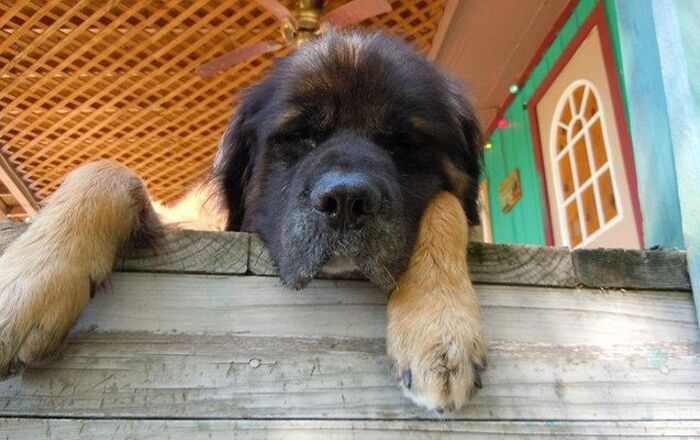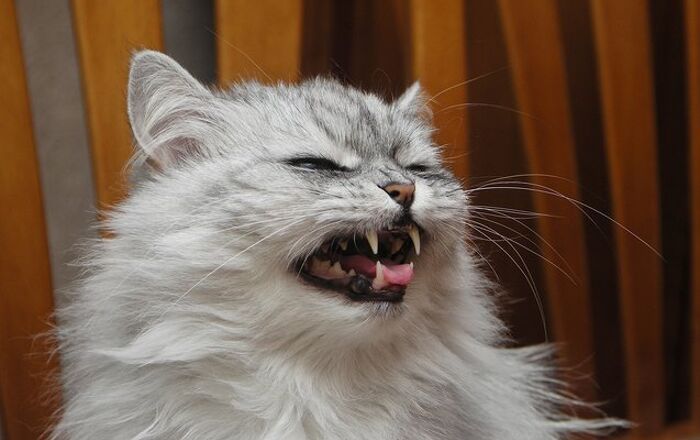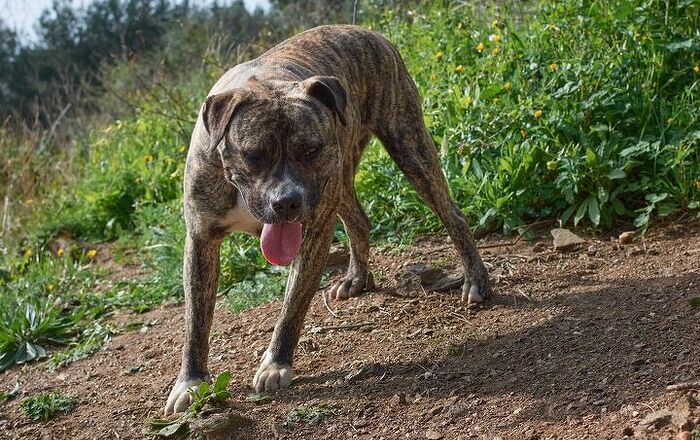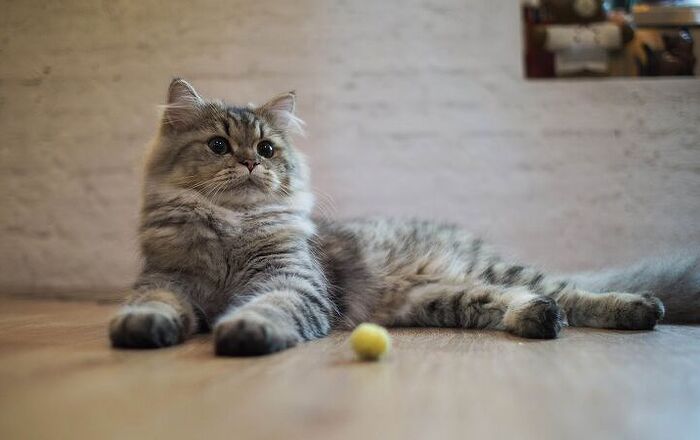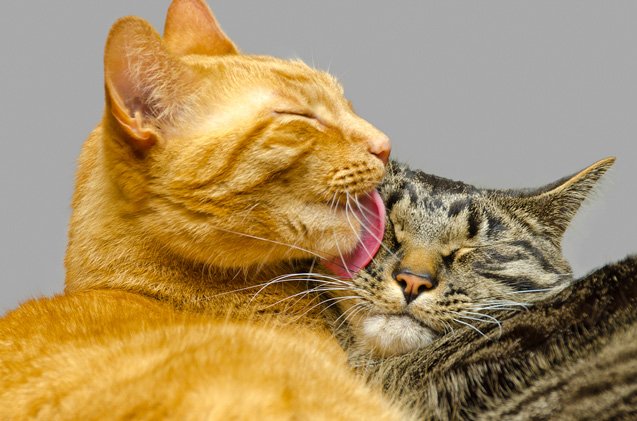
Domestic Shorthair Breed History
One of the most popular cat breeds in the world is the Domestic Shorthair, which is also commonly referred to as DSH. Other common names include house shorthair cat, shorthair household pet, or moggies, as they’re called across the pond. But this is not a single recognized breed. Rather, a Domestic Shorthair cat is one that has mixed ancestry. In fact, some might say that these kitties are the mutts of the feline world. They’re cute, loving, and smart, even though they don’t have a pedigree to prove it.
A lack of pedigree doesn’t mean that these cats don’t boast a rich history. It is believed that the Domestic Shorthair was domesticated in ancient Egypt, around 2000 BC. But the breed did not make its way to America until the Pilgrims took some of these cats on the Mayflower for purposes of rodent control. These furry hunters helped take care of vermin issues that settlers faced on their journey to the New World, and the rest is history. No longer viewed as independent hunters, cats of all breeds, including the Domestic Shorthair, are now beloved pets who make their human companions happy with their fun antics, loyalty, and love.
These days, the Domestic Shorthair cat is one of the most common pets. And even though the breed is non-pedigreed, it is recognized by the Cat Fanciers’ Association (CFA) and World Cat Federation (WCF). They don’t all look the same (more on that below), but they have one thing in common: they make amazing pets.
One of the most popular cat breeds in the world is the Domestic Shorthair, which is also commonly referred to as DSH.
Breed Traits
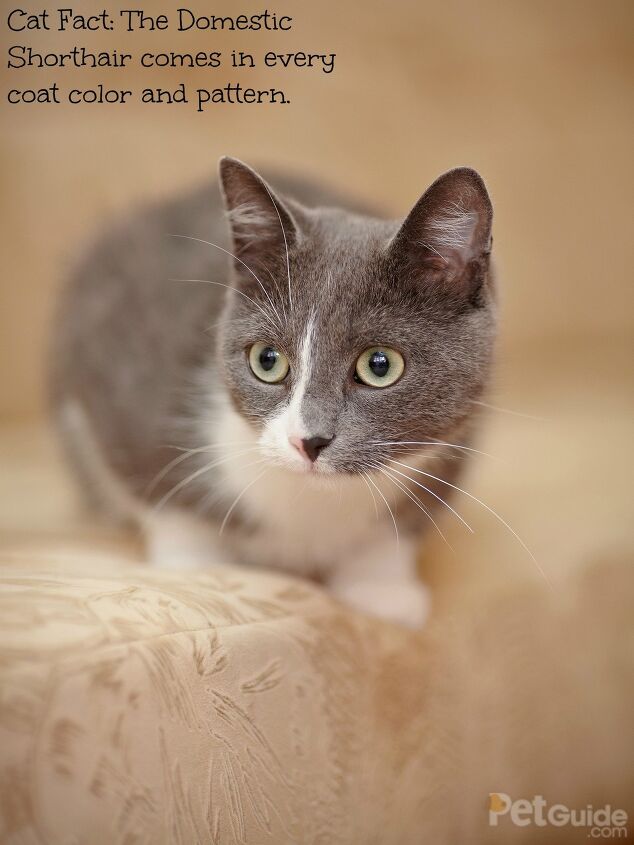
Your domesticated feline companion is still a predator at heart. That’s why cats love playing with a variety of toys that allow them to unleash their inner hunter and satisfy this natural instinct. And if you were to let your cats go outside, you shouldn’t be surprised if they end up hunting down birds or rodents. In fact, the Domestic Shorthair has a strong hunting instinct and will gladly spend a few hours every day tracking down prey, even if it has been well fed and does not need to hunt in order to eat and survive—just another good reason to keep your cat indoors.
Indoors, the only thing your kitty can hunt is a feather teaser or the occasional leg in passing. If you think that your cat is feeling a little bored or adventurous, you can work on training your feline friend to go outside with you, and you can do this in a few different ways while ensuring your pet’s safety, as well as the safety of local small wildlife. For instance, you can set up a catio, or you can train your cat to walk on a leash or sit in a stroller. That way, your outgoing and curious Domestic Shorthair cat can remain under your supervision when exploring the outdoors.
Even though most cats have certain traits that they all share, each breed has something unique to bring to the table. This breed’s personality varies widely from one kitty to the other. Again, this is the result of the fact that the DSH is actually a mixed breed with various genes that can affect not only the cat’s appearance, but also its temperament. So, while some cats may be quiet and shy, others are more outgoing, inquisitive, and talkative. Some have more energy, while others can be more laid-back. Ultimately, though, a well-socialized kitten will grow up to be a great lifelong companion in any cat loving family.
Domestic Shorthair cats are easy to find, as they are one of the most common breeds. You might encounter them as strays who are living outside or you might find them at adoption events in your community. In addition to being ultra-cute and affectionate, they can be playful, chatty, and always up for a snuggle. Others might exhibit more of an independent attitude, wanting to have their own space that they can retreat to for some alone time throughout the day. In other words, when it comes to the Domestic Shorthair’s personality, it can be hard to pin down exactly how each cat will behave and what their preferences will be. Getting to know each one as a unique individual is going to shed light on how you can create a home that’s comfortable for them and fulfills their needs.
As a pet parent, you want to take steps daily to help ensure your furry friend will remain happy and healthy. When it comes to Domestic Shorthairs, one thing to keep in mind is that these cats enjoy eating, and they are actually prone to obesity because they tend to overeat. Therefore, keeping an eye on your Domestic Shorthair cat’s weight and meal portions is important. Failing to control the amount of food your cat eats might have serious consequences, as overweight and obese cats may more prone to a variety of health issues, such as diabetes. Talk to your veterinarian about the best foods to feed your Domestic Shorthair, and discuss portion control to be sure your kitty is getting the right amount of food for overall wellness.
Overall Description
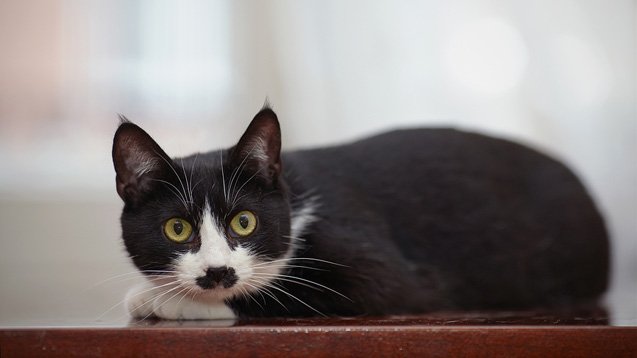
Because of their mixed ancestry, Domestic Shorthairs come in a wide range of colors and patterns. In terms of size, males are generally larger than females, but they all typically feature round heads, medium length tails, and round paws.
These cats have well-proportioned bodies and, even though they can come in a variety of sizes, they are generally medium, or average, in terms of height and weight. They can also be described as muscular, and their weight might range from around 6 pounds to 16 pounds, on average.
As the breed name implies, the Domestic Shorthair cat will have a short coat. Also, this breed is related to the Domestic Medium Hair and Domestic Longhair, so you might find similar physical attributes amongst these breeds, with the coat length helping to distinguish between them.
Basically, in the same way that their personalities can vary, the physical attributes of this beautiful breed can differ from one kitty to the next. So, you might adopt two kittens from a shelter, and they might grow up to be quite different in terms of their stature, size, the way their faces look, etc. It’s just part of what makes this breed so special!
Colors
The Domestic Shorthair comes in every color and pattern, including a variety of beautiful eye colors that include blue, green, hazel, and gold. Some may even have odd eyes, or one eye that is blue and another that is yellow, as an example. The stunning eye colors often complement the coat color of the cat, giving these feline mutts a truly gorgeous appearance.
Their colors range from white and black, to ginger, gray, and more. And patterns include tabby, patched tabby, tortie, solid, calico, and smoke. Also, because Domestic Shorthair cats come in many coat colors and patterns, you can have more than one DSH in your family but they can look totally different from one another. Some might have solid color coats, such as black, gray, white, and orange. But the Domestic Shorthair might have a coat with more than one color, such as black and white, orange and white, or gray and white. They can also showcase beautiful calico or tortoiseshell (a.k.a. tortie) coats. And, of course, there’s also the super popular tabby pattern as well.
Bottom line: the beautiful Domestic Shorthair cat breed doesn’t have a specific appearance. In addition to coming in various sizes, their coats and eye colors also showcase the fact that each kitty is one-of-a-kind.
Grooming Requirements
Because the Domestic Shorthair is a cat that has a short length coat, a simple weekly brushing is a great way to maintain the health and softness of the skin and fur. These cats will thoroughly groom themselves, so you don’t need to worry about bathing them. Also, unlike longhaired breeds, you don’t need to worry as much about the fur getting matted or tangled.
However, it is still a great idea to purchase some brushes that are designed specifically for cats so you can brush your pet’s fur on a regular basis. This can help you bond with your frisky feline, as well as help her feel amazing, and it may also be helpful when it comes to preventing hairballs. Plus, if you brush out the loose fur from your kitty’s coat, it is less likely to end up all over your furniture and clothes!
Since the Domestic Shorthair cat is pretty low-maintenance, particularly when it comes to grooming needs, it can be a good choice for families of all sizes. And these features also make this an ideal cat breed for busy families who don’t have too much time to spend grooming their pets but do enjoy brushing them regularly to help remove loose hair and reduce shedding.
Photo credit: karamysh/Bigstock; AZALIA/Bigstock


